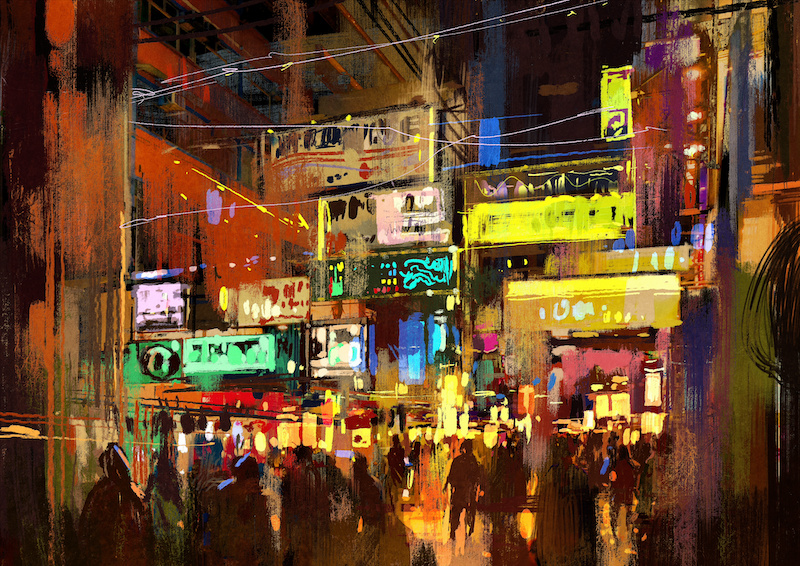The evolving threat of vehicle attacks
January 2022: CRJ Advisory Panel Member, Lina Kolesnikova analyses the challenges involved in protecting large crowds from vehicle attacks and she explores how the threat is evolving as technology plays a greater role

On November 21, 2021, a sports utility vehicle (SUV) drove at speed into crowds at Christmas parade in Waukesha, USA. Authorities confirmed the deaths of six people and that more than 40 were injured. Ten children were among those seriously wounded, some of them were left in a critical condition. The perpetrator was identified later that day and, so far, there is no indication that this case has anything to do with a terrorist attack.
The widespread restrictions imposed to contain the Covid-19 pandemic since last year have, perversely, helped to minimise the risk of attacks as mass gatherings have been prohibited. Things are changing though, and there are places where there are only partial lockdowns, or none at all. So, gatherings are happening more and more often, and the numbers of people attending are increasing, too. Hence, the risk has returned.
The tragedy in Waukesha is a reminder of the threat posed by weaponised vehicle attacks at a time when the potential impact could be at its highest. When it comes to decreasing the scale of festivities or prohibiting them altogether, Covid is usually cited as the main reason. However, people are tired of restrictions and continuous changes, so many such events have stayed open while governments remind the public about the need for vigilance. The British Government issued a warning to Christmas shoppers about being vigilant and increased the level of terrorist threat from “substantial” to “severe” after the explosion in Liverpool.
Attacks using vehicles have become a challenge for security professionals around the globe. Such attacks can be arranged at a very low cost, and they do not require any special knowledge or skills other than very basic vehicle driving abilities. They can cause a significant number of victims and create panic.
It is difficult to prevent such attacks. Larger cities attempt to secure open public spaces with artificial, physical obstacles. However, it is much more difficult to put barriers in place when talking about dynamic events with moving people, such as parades and marathons, or regular streets used by participants at a large event getting to and from a venue, for example at stadium concerts. As it stands, it is impractical to rely on securing all ways to a venue with barriers, which is often simply impossible owing to the nature of the area where the venue might be located. To highlight further the difficulty of preventing and protecting, think of crowds of shoppers that could be attacked near shopping malls.
When it is very difficult to protect all potential target spaces, one can look at the attacker’s tool – a vehicle. Keep in mind that urban areas contain hundreds of thousands – or even millions – of vehicles and pedestrians who can be targeted. We might need to think of protecting every pedestrian from any vehicle in the vicinity… a daunting task. Hence, full prevention of vehicle ramming attacks, at least, at the current level of technology and control development, is not a realistic security goal.
That leads us to consider mitigation measures and focus our attention on improving protection for the most attractive places for terrorists who consider them potential targets for such an attack. This can be achieved with both temporary and permanent barriers and other infrastructural and/or architectural elements. Such technological solutions, adequate to the current vehicle technologies, exist. Measures should be tailored to specifics of a location and of its use.
Elements of ‘4G’ come into play here, too (Lina’s article, Embassies and security in CRJ 15.4, described how the term 4G was used for the first time – guards, gates, guns, and guidance), such as guards and guidance. Police and private security personnel should pay more attention to larger vehicles, especially those that park in and around the same area for several days in a row. Other important measures are increasing scrutiny of the vehicle rent services (in respect to screening those who take cards), and especially those renting large vehicles like SUVs, large vans or trucks. Similarly, attention must be paid to the theft of large and heavy vehicles, and notice made of any larger events which might be happening in the area.
It might seem that this task is nigh on impossible to achieve. Now consider today’s technological advances. So far, we face the task of avoiding a collision of a person and of an attacking vehicle in 2D space, where static barriers can be employed.
Now add driverless vehicles to the mix… managed by an AI super brain co-ordinating millions of vehicles and other devices like traffic lights… programmable and, potentially, remotely controlled by hackers… and then comes 3D, with flying cars and swarms of drones… and radio electronic warfare which could be one of the next things added to the arsenal of controls against vehicle attacks.
Image: Grandfailure/Adobe Stock